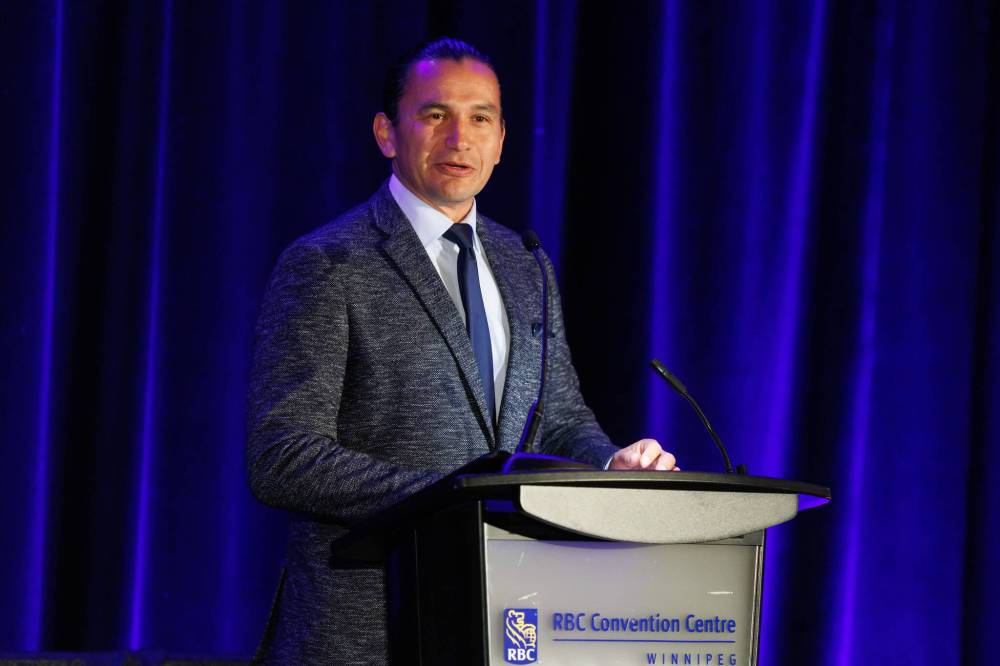The double-edged sword of inflation
Advertisement
Read this article for free:
or
Already have an account? Log in here »
To continue reading, please subscribe:
Monthly Digital Subscription
$1 per week for 24 weeks*
- Enjoy unlimited reading on winnipegfreepress.com
- Read the E-Edition, our digital replica newspaper
- Access News Break, our award-winning app
- Play interactive puzzles
*Billed as $4.00 plus GST every four weeks. After 24 weeks, price increases to the regular rate of $19.00 plus GST every four weeks. Offer available to new and qualified returning subscribers only. Cancel any time.
Monthly Digital Subscription
$4.75/week*
- Enjoy unlimited reading on winnipegfreepress.com
- Read the E-Edition, our digital replica newspaper
- Access News Break, our award-winning app
- Play interactive puzzles
*Billed as $19 plus GST every four weeks. Cancel any time.
To continue reading, please subscribe:
Add Free Press access to your Brandon Sun subscription for only an additional
$1 for the first 4 weeks*
*Your next subscription payment will increase by $1.00 and you will be charged $16.99 plus GST for four weeks. After four weeks, your payment will increase to $23.99 plus GST every four weeks.
Read unlimited articles for free today:
or
Already have an account? Log in here »
Hey there, time traveller!
This article was published 20/11/2024 (345 days ago), so information in it may no longer be current.
For governments, inflation is a double-edged sword.
The problem? More goes out, and, in a lot of areas, less comes in.
You need look no further than the front page of Tuesday’s Free Press to see why.

MIKE DEAL / FREE PRESs fileS
Premier Wab Kinew’s government faces many inflationary pressures.
First off, there’s the provincial government’s plan to freeze Hydro rates for the coming year — the freeze will provide some small relief to customers facing a wide range of inflationary price increases in the past year, and the freeze is at least a small nod towards addressing the difficulties people are having with affordability. Problem is, just like the removal of the provincial gas tax last year, capping rates for a provincial utility that’s already losing money because of the impact of low water levels on hydro production will take money straight out of provincial government coffers.
Second, there’s a story that affects the City of Winnipeg the most, but is bound to affect the provincial government as well. Winnipeg has a waste problem: there just isn’t capacity in the city’s current sewage system to handle the volume of biosolids the city produces, and that problem will become absolutely critical within the next four to six years. (The term “biosolids” is a lovely little euphemism. Here’s a definition from the U.S. Environmental Protection Agency: “During wastewater treatment the liquids are separated from the solids. Those solids are then treated physically and chemically to produce a semisolid, nutrient-rich product known as biosolids. The terms ‘biosolids’ and ‘sewage sludge’ are often used interchangeably.”)
As our story points out, without the completion of the north end sewage treatment plant, the city could reach a point where it will have to stop development of new homes and businesses, due to an inability to handle the volume of waste.
But that’s the other edge of the sword: for a number of reasons, including inflation, the completion of the entire facility is expected, at minimum, to cost $2.3 billion, compared to the original cost of $795 million. (And that’s not all — anticipated cost increases suggest the total cost may hit $3 billion.)
The new biosolid facility alone has jumped in cost from $553 million to $1.035 billion, and while the city had agreements to cost-share the project with the provincial and federal governments when it was a $533 million venture, those agreements don’t cover the dramatic increase in price.
The truth is, though, that the province, despite its own fiscal straits due to inflation, doesn’t have much choice but to find money to support the plant. The timeline is important: depending on the rate of development, the city has between four and six years before it completely runs out of sewage capacity. The construction lead-time for a biosolids plant is four to five years.
Think about the overwhelming cost to the provincial economy if the city had to pause development because of a lack of sewage capacity: think about how that would exacerbate housing issues in the city and affect the current federal efforts to increase rental housing, let alone the stalling of economic development.
The bottom line in all this? The provincial government is in the unenviable position — just like the rest of us — of seeing its costs rise on almost all fronts, though its revenue from sales tax may increase. The price of everything from provincial road repairs to food in hospitals to things as simple as paint are rising in the same way for the government as they are for everyone else. At the same time, as it seeks to help Manitobans afford basic needs, it is trimming its own sources of available revenue.
Pragmatically, the provincial government can only afford to burn both ends of the candle for so long.



